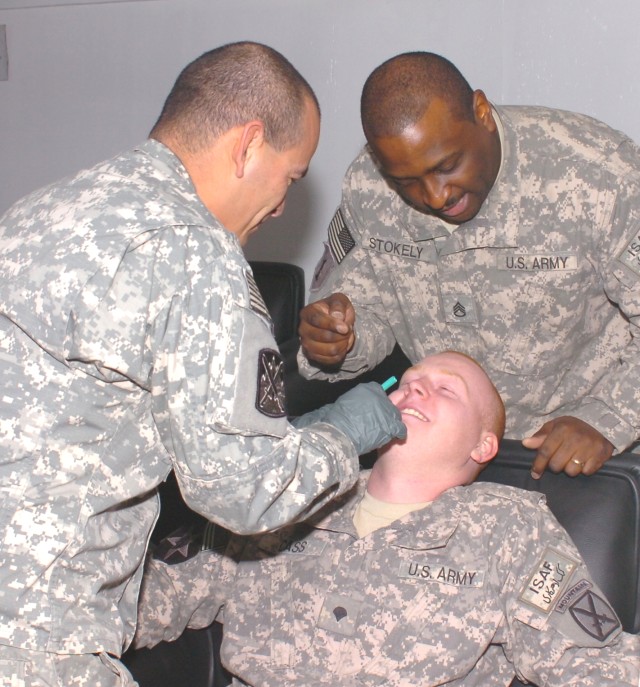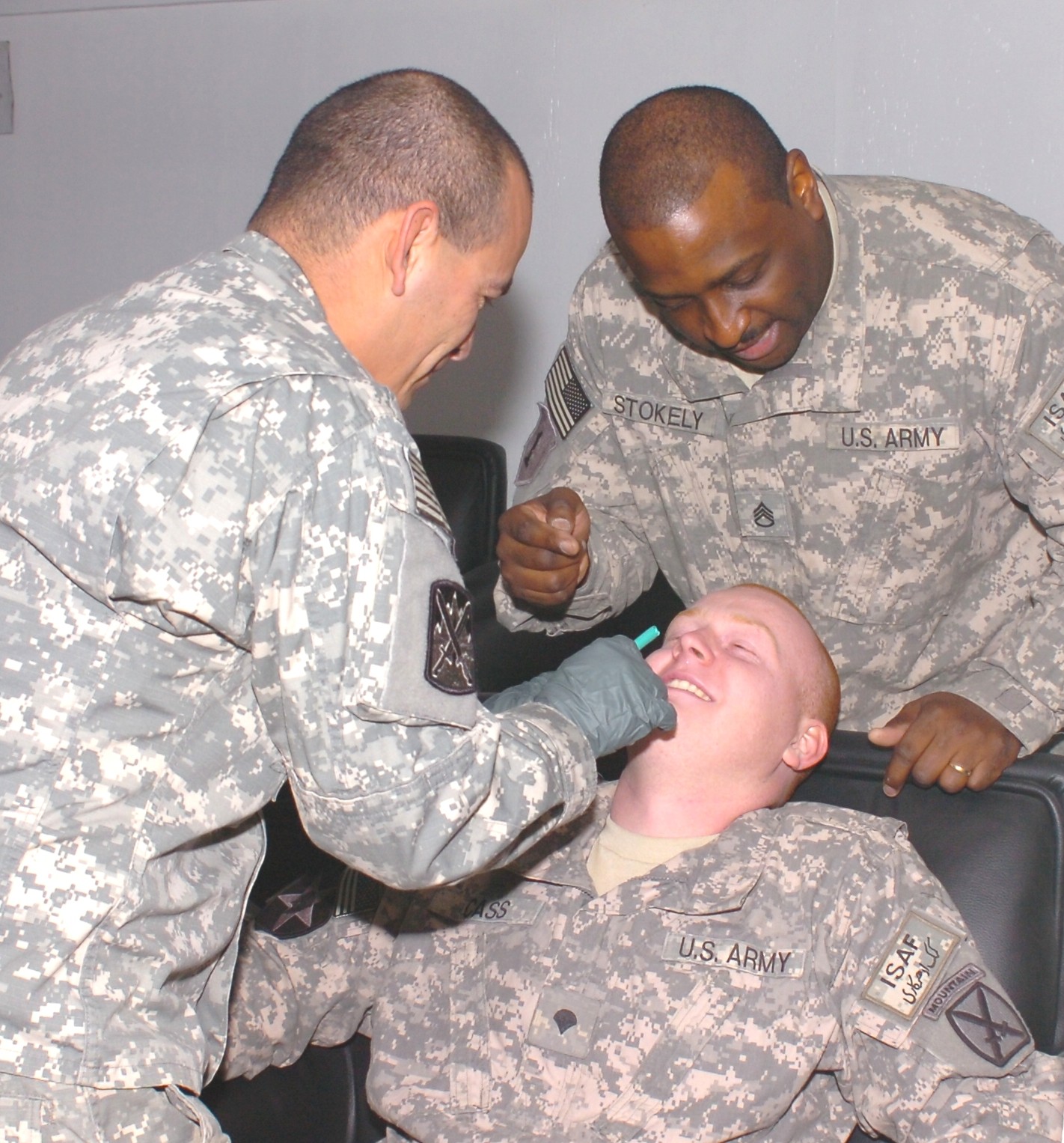
PARWAN PROVINCE, Afghanistan Aca,!" Soldiers of Task Force Mountain Eagle had just begun moving into their new buildings on the opposite side of the airfield when they took indirect fire Dec. 20. Soldiers who recently completed combat life saver qualification immediately responded and treated the wounded until medical personnel arrived.
Aca,!A"Our people did a great job,Aca,!A? said U.S. Army Maj. Jamie Torres, 10th Combat Aviation Brigade, Task Force Falcon flight surgeon. Aca,!A"The need and importance of the CLS was highlighted by the rapid medical response of our Soldiers living there who were CLS qualified and who were able to apply buddy aid to their fellow injured Soldiers. It was from their quick reactions that those injured were able to make it to higher level of care and that none died.Aca,!A?
When U.S. Army Col. Pedro Almeida took command of 10th CAB, he set a goal for 100 percent of the brigade Soldiers to be CLS certified, said Torres, a native of Pulaski, N.Y. The doctrinal requirement is one per crew or 25 percent of an Army unit to be qualified.
Aca,!A"ItAca,!a,,cs important because everybody is a combat life saver,Aca,!A? said U.S. Army Command Sgt. Maj. Kenneth Patton, 10th CAB, TF Falcon, command sergeant major. Aca,!A"Everyone needs the ability to save a SoldierAca,!a,,cs life.Aca,!A?
To reach this goal, task force medics conduct CLS training twice a month.
Aca,!A"TF Tigershark at Salerno is a model for the Army and the brigade. TheyAca,!a,,cre at 99 percent,Aca,!A? said Torres. Aca,!A"Prior to leaving Fort Drum, (N.Y.), we had trained 1,222 Soldiers across the brigade. Since arriving in theater, weAca,!a,,cve trained another 500 Soldiers and are sitting at 56 percent.Aca,!A?
In a class early in February taught by U.S. Army Staff Sgt. Shareef Stokely of Eastover, S.C., Soldiers learned a procedure to ensure a casualtyAca,!a,,cs airway remains open. Stokely explained Soldiers can use the nasal pharyngeal tube to keep a casualtyAca,!a,,cs airway open when the individual is having difficulty breathing or if the injured person may have difficulty later, such as when a victim is unconscious.
Aca,!A"Which nostril do we insert the tube'Aca,!A? Stokely, a 16-year medic who is currently assigned to Headquarters Support Company, Task Force Mountain Eagle, asked the class.
Most of the Soldiers remembered from previous training that it was the right nostril since itAca,!a,,cs usually larger.
Aca,!A"Make sure the bevel is facing the septum,Aca,!A? he added.
Although one Soldier was able to insert the NPT into his own nose, it was an uncomfortable procedure for the nearly dozen Soldiers of the class.
Aca,!A"ItAca,!a,,cs not happening,Aca,!A? said one Soldier coughing as he frantically reached to pull the tube out of his nose.
Aca,!A"ItAca,!a,,cs a lot easier to do on someone unconscious,Aca,!A? said Stokely with a smile.
The previous day, Stokely taught the Soldiers how to apply bandages and, when necessary, tourniquets. Following the hands-on NPT session, instructors showed the class the supplies available in a combat life saver bag, which they may be responsible for once CLS qualified.
Stokely says he feels very strongly about the importance of training Soldiers life saving techniques.
Aca,!A"ItAca,!a,,cs important because medics canAca,!a,,ct be everywhere all the time,Aca,!A? he said. Aca,!A"ItAca,!a,,cs nice to have other people know the skills. ItAca,!a,,cs all about extra hands and saving the most lives.Aca,!A?
In the absence of the medics, Soldiers with combat life saver skills can make all the difference, said Torres.
Aca,!A"CLS training affords every Soldier the ability to respond to a medical emergency,Aca,!A? he said. Aca,!A"ItAca,!a,,cs the Army\'s attempt to get every Soldier to be able to provide self aid and buddy aid in combat.Aca,!A?

Social Sharing